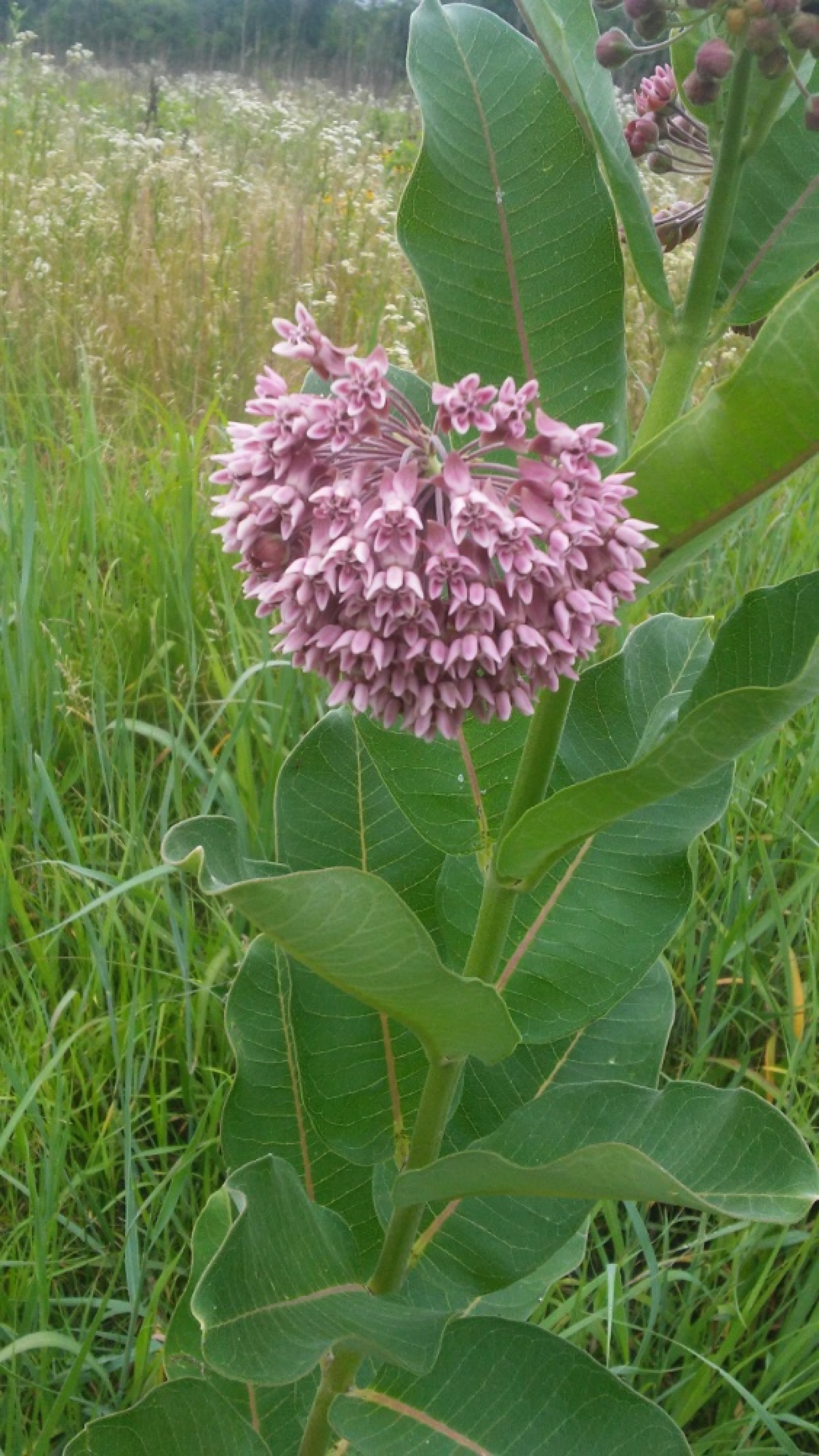
Going from derecho to natural diversity
Dec 09, 2020

Here’s some advice for making the transformation
The Gazette is working with the Linn Landowner Forum to present a weekly series of columns about elements landowners should consider when replacing trees and plants lost in the Aug. 10 derecho. The series has focused on recovery, the importance of native plants and other topics. Ninth in a series. This article was written by Allie Rath, Emery Davis, and Helen Leavenworth.

While we still see the impacts of the derecho everywhere around us, wouldn’t it be great to create something beautiful in its place?
It’s possible. You can turn your yard or disturbed areas into a native pollinator garden, full of grasses and colorful wildflowers native to Iowa. These grasses and wildflowers grew up here over thousands of years and are very resilient.
They are important plants for pollinators that are in peril — species like songbirds, butterflies, bees and hummingbirds.
Native plantings can store carbon to help fight climate change and help improve water quality and soil by filtering and slowing runoff.
SITE PREPARATION
You can make your native pollinator garden as big or as small as you want, but choose the sunniest spot. Even a couple of plants along your house can be beneficial.
You’ll want to invest some time into site preparation during spring and summer 2021 to make this project a success. It will be worth planting once and seeing all the wildflowers coming back year after year.
Once you have your sunny spot(s) picked out, make sure the ground is smooth and firm. Then, most importantly, you will want to eliminate the existing vegetation before planting your native pollinator garden.
One option for preparing your site is also the quickest and cheapest way, which is through glyphosate applications.
This kind of herbicide affects only what’s green and growing and can befound at most hardware and farm stores.
You will need to apply this herbicide to the intended area starting next spring and again every four to six weeks, or whenever vegetation grows to 4 to 6 inches, until next fall.
This will eliminate the existing vegetation and any weed seeds that may germinate once the first vegetation starts to die.
It is critical to eliminate plants that would compete with the soon-to-beplanted natives for nutrients, sunlight and space.
For safety and effectiveness, read and follow the container’s label.
Other options for eliminating vegetation without chemicals would be to use solarization or sod removal. Have your site prepared by fall 2021.
SEED CHOICES
[caption id="attachment_6850" align="alignleft" width="300"] A native pollinator garden shows a diversity of wildflowers, bloom colors and timing. (Supplied photo: Butterfly Weed: Ascelpias tuberosa)[/caption]
A native pollinator garden shows a diversity of wildflowers, bloom colors and timing. (Supplied photo: Butterfly Weed: Ascelpias tuberosa)[/caption]
A fun task is choosing the native seed mix. Make sure to use wildflowers and grasses native to Iowa. Choose seeds of species with as many different colors and bloom periods as possible to provide ongoing food, nectar and pollen for wildlife.
Figure out the square footage of your area, and then you’re ready to order. You can order seed mixes from many places in Iowa. You can search online for “Iowa Prairie Seed Providers” or see tallgrassprairiecenter.org/seed-service-providers for a list of seed companies.
PLANT IN NOVEMBER
With your site prepared and your seed mix in hand, you’ll plant after Nov. 15, whenever snow is not more than 4 inches deep or crusted over.
Get two buckets and divide the seed mix roughly into halves. Add about the same volume of filler (damp sand, rice hulls, cocoa hulls, vermiculite, cat litter) as the volume of the native mix into each bucket and stir. Take one bucket and hand-broadcast the area, which is like spreading chicken feed or sprinkling flour to knead bread. Walk parallel lines up and down, covering the whole area.
Then grab your other bucket and do the same thing, this time with a path that’s perpendicular to your original lines.
That’s it, you did it.
The winter snow, freeze, ice and thaw process will help push the seeds into the ground where they need to be.
FIRST GROWING SEASON
Now you wait for spring and germination.
During this first growing season, you will want to keep your area mowed or trimmed as close to 6 to 8 inches as possible throughout the year.
Don’t let the vegetation get above 12-18 inches before mowing or trimming, because you don’t want to smother out your new seedlings.
This first year, the natives are putting down roots and won’t have a lot of aboveground growth.
Have patience because most species won’t start to bloom for two to three years. But it’s worth it for the longevity, beauty and wildlife.
There are many good resources for details on preparing and creating native pollinator gardens, including the websites of the Xerces Society and the University of Northern Iowa’s Tallgrass Prairie Center.
Allie Rath is the senior farm bill wildlife biologist for Iowa Pheasants Forever, where she works with landowners and farmers to create or improve wildlife habitat on their property with the help of local, state and federal programs. Emery Davis is the soil health coordinator with the Indian Creek Soil Health Partnership. He works with farmers and landowners to improve soil health, water quality and wildlife habitat. Helen Leavenworth is manager of the Linn County Natural Resources Conservation Service office, assisting farmers and partners with planning conservation activities that help them meet their goals.